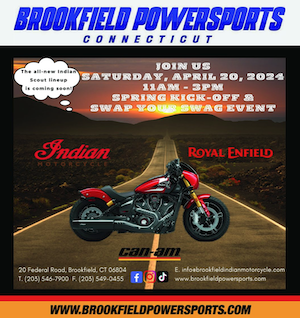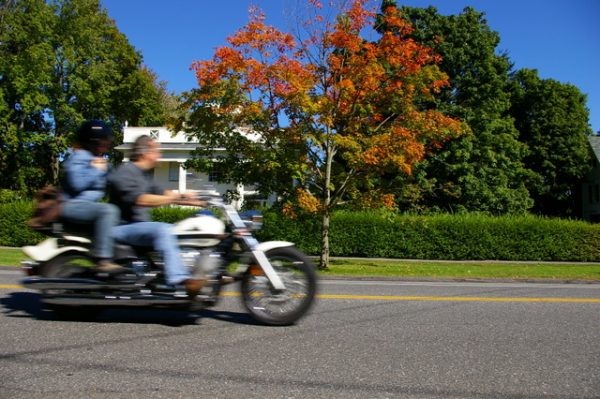Let’s face it – motorcycles can be difficult to see in traffic. They have a very narrow profile compared to all other vehicles and are a fraction of the size of a typical automobile. Even alert drivers might miss seeing a motorcycle depending on their position in traffic.
Research has repeatedly shown that wearing bright colors and reflective material increases conspicuity and the chance of being noticed in traffic. There are other things riders can do to increase conspicuity. In a past column I covered how using proper following distance and lane position can help. This time let’s look at how adding auxiliary lighting to a motorcycle may also help.
According to data from Connecticut Department of Transportation, crashes involving a motorcycle where another vehicle was deemed most at fault more than 50 percent were due to the other vehicle failing to yield right of way or following too closely. I suspect “failing to yield right of way” mostly translates to oncoming drivers who turn left in front of a motorcyclist. “I didn’t see them” is probably the most common four words spoken by drivers at the scene of the crash with a motorcycle. I bet none say “I didn’t hear them,” but that is a topic for another article.
Beginning in the 1970’s there we have been several railroad safety studies conducted to determine if different locomotive lighting can provided greater safety. What was learned after all the research and field evaluations showed that additional [strobe] lights used in a triangular configuration with a standard headlight was most effective.
This triangle of light concept has also spread in to the motorcycling world. Placing auxiliary lights close to or in line with the main headlight makes them blend together to appear as one light. Spreading them out in a triangle creates separation of the light and a better human perception and can apparently make motorcycles appear to have more presence. There are several auxiliary lighting systems that mount in different methods depending on the bike lower and wider than the main headlight.
Headlight modulators are another popular item. These work by modulating the high beam intensity from full on to an approved level, but never fully off. That would be considered a flashing forward facing light, which is considered illegal in many states. The devices sense ambient light only allow modulation during daylight operation.
These lighting options can provide more conspicuity to the front, but not other directions. Never fear, there are other product on the market to address this. There are high intensity LED lights or other modules that wire to the existing brake lamp that will flash a few time before staying on solid whenever brakes are applied. I have not found any research or other information that shows that any decorative accent lighting improves conspicuity, but if it is legal lighting then it can’t hurt.
I recently saw a new product that was funded by Kickstarter which is a do it yourself kit of electroluminescent strips that are applied to the helmet. They can glow steady or blink. The somewhat alien look will surely get you noticed at night:
http://www.psfk.com/2014/10/electroluminescent-motorcycle-helmets-visibility.html
 Ride CT & Ride New England Serving New England, NYC and The Hudson Valley!
Ride CT & Ride New England Serving New England, NYC and The Hudson Valley!






Perhaps an electric lighted reflective vest. Drawing board here I come!
JR